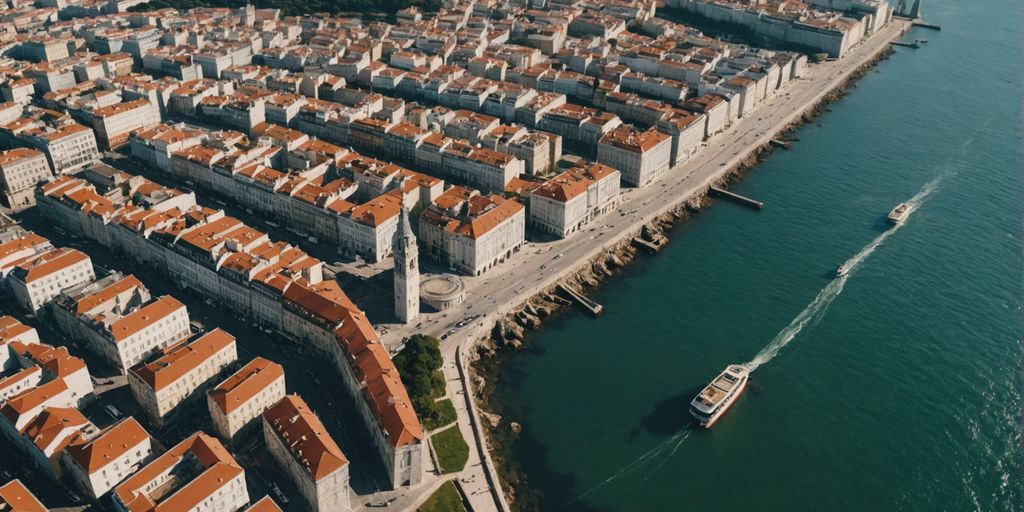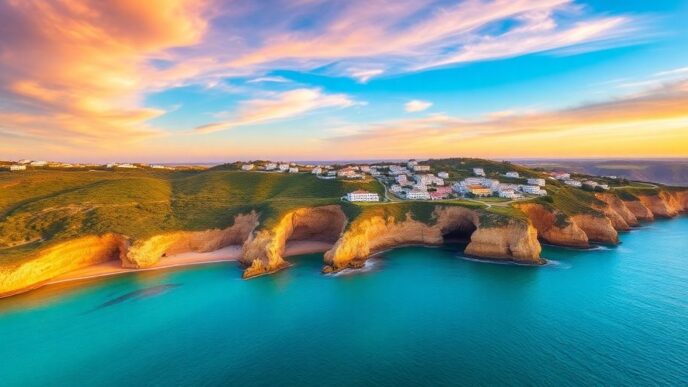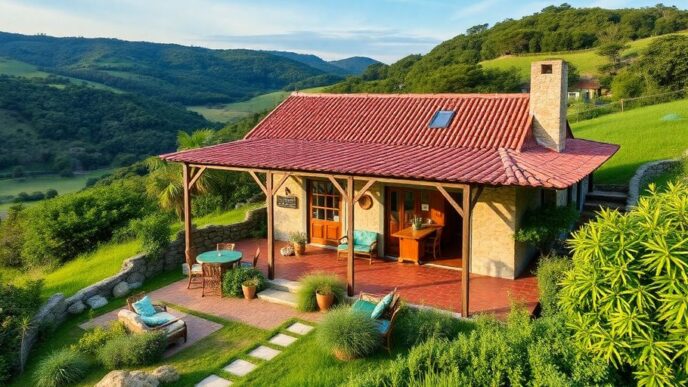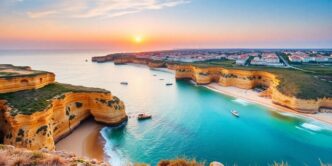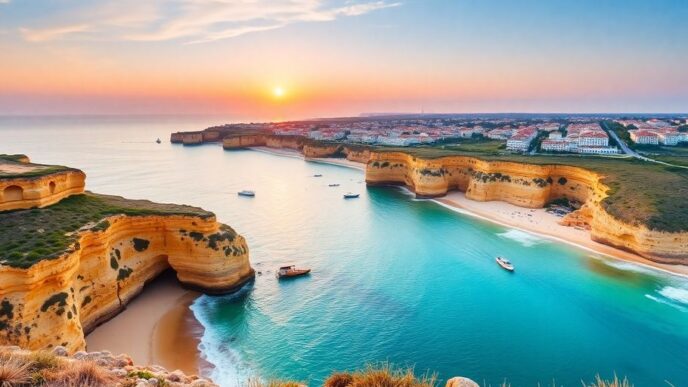1. Jerónimos Monastery
The Jerónimos Monastery is a must-see in Lisbon. This World Heritage site is a stunning example of Manueline architecture. Built in 1502, it was funded by the spice trade. The monastery is located in the beautiful Belém neighborhood, easily accessible from Lisbon’s historic center. The intricate stonework, especially in the cloisters, is breathtaking. Vasco da Gama, the famous explorer, is buried here. His tomb is at the entrance of the church. The monastery was commissioned by King Manuel I to honor Vasco da Gama’s voyage to India. It symbolizes the wealth of the Age of Discovery. Be prepared for long queues, but the adjoining church is free and just as decorative.
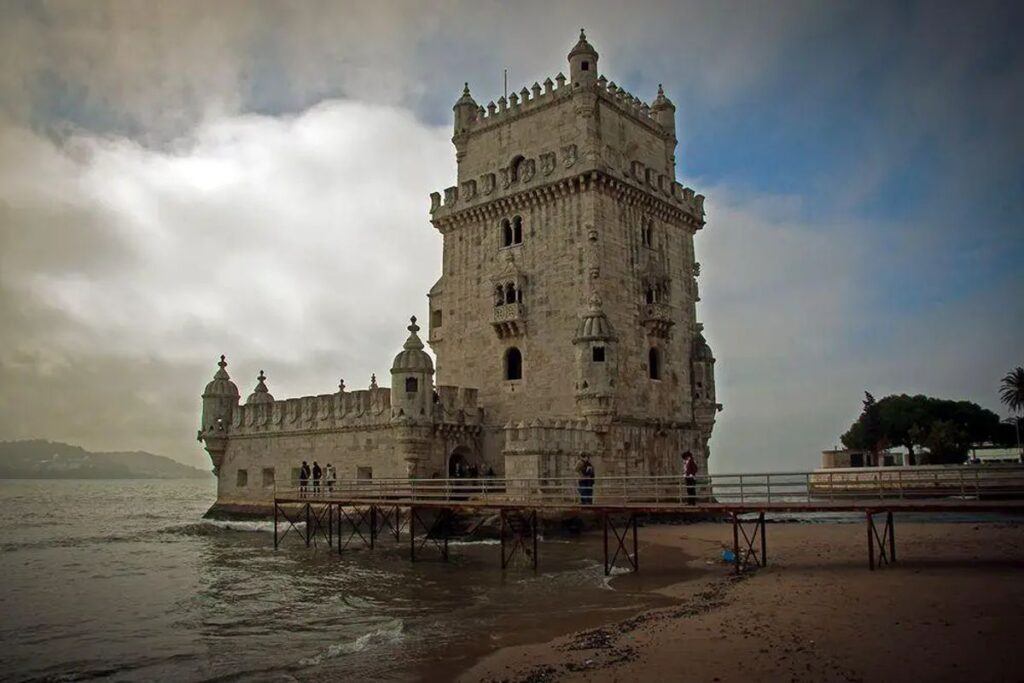
2. Belém Tower
Belém Tower is one of Lisbon’s most iconic monuments. It stands near the mouth of the River Tagus. This historic tower is a symbol of Portugal’s extraordinary Age of Discovery during the 16th century.
The tower was built to guard the river entrance into Lisbon’s harbor. King Dom Manuel ordered its construction. During his reign, Portugal expanded its empire, reaching Brazil and finding a sea route to India.
Belém Tower has stonework motifs from the Discoveries era. You can see twisted rope designs and the Catholic Crosses of Christ. There are also symbols of Lisbon’s patron saint, St. Vincent, and even a rhino.
This small castle looks like something out of a fairy tale. It served as a beacon to many explorers who left from this site in the 15th and 16th centuries. Today, it is protected as a World Heritage site.
3. Castle of St. George
St. George’s Castle is a must-see in Lisbon. It sits on a hill near Alfama, offering stunning views of the city. The castle has a rich history, including the Christian crusaders’ victory over the Moors in 1147. Visitors can explore the citadel’s towers and battlements. The castle also features tranquil gardens and an informative museum. Don’t miss the chance to explore this iconic landmark and its historical sites.

4. Discoveries Monument
The Discoveries Monument, or Padrão dos Descobrimentos, stands tall at 170 feet. It honors Portugal’s incredible history of discovery. The monument is shaped like a ship, with 33 figures aboard, led by Prince Henry the Navigator. These figures include explorers, poets, and painters from the Age of Discovery.
Visitors can explore:
- Lifelike depictions of explorers and other important figures.
- Temporary exhibitions inside the monument.
- An elevator ride to the top for a breathtaking view of the Belém district.
Outside, there’s a huge compass with a world map tracing the explorers’ routes. It’s a fabulous monument to Portugal’s adventurous past.
5. Ajuda Palace
The Palácio Nacional da Ajuda was the royal residence for Portuguese nobility in the 19th century. This palace is beautifully restored with 35 lavish staterooms. Highlights include the opulent banquet hall and grand throne room. Despite its beauty, it’s often overlooked by tourists.
Construction began in 1802 but was interrupted in 1807 when the royal family fled to Brazil to escape Napoleon’s armies. The palace was never finished and still looks incomplete. It served as a royal residence in the late 19th century. Some wings are open as a museum, while others house the Ministry of Culture.
6. Santa Justa Elevator
The Santa Justa Elevator is a must-see in Lisbon. This neo-Gothic elevator stands out in the downtown area. It was designed by a student of Gustave Eiffel. The elevator has been around for more than a hundred years.
Things to Do Near Santa Justa Elevator
- Enjoy the panoramic views from the top.
- Visit the nearby São Pedro de Alcântara Viewpoint.
- Explore the Baixa and Chiado districts.
- Take photos of the beautiful ironwork.
The elevator connects the lower streets of Baixa with the higher streets of Chiado. It’s a fun way to see the city from above. Don’t miss this unique piece of Lisbon’s history.
7. Rua Augusta Arch
The Rua Augusta Arch is a must-see in Lisbon. This historical building is located in Praça do Comércio. It was built to commemorate Lisbon’s reconstruction after the 1755 earthquake. The arch was designed by Santos de Carvalho and finished in 1873.
From the top, you get one of the best views of the city. You can see the grand square, the river, the cathedral, and the cobbled streets of downtown. It’s a perfect spot for photos.
The arch once welcomed those arriving in Lisbon by boat. Today, it stands as a symbol of the city’s resilience and beauty. Don’t miss this iconic landmark when you visit Lisbon.
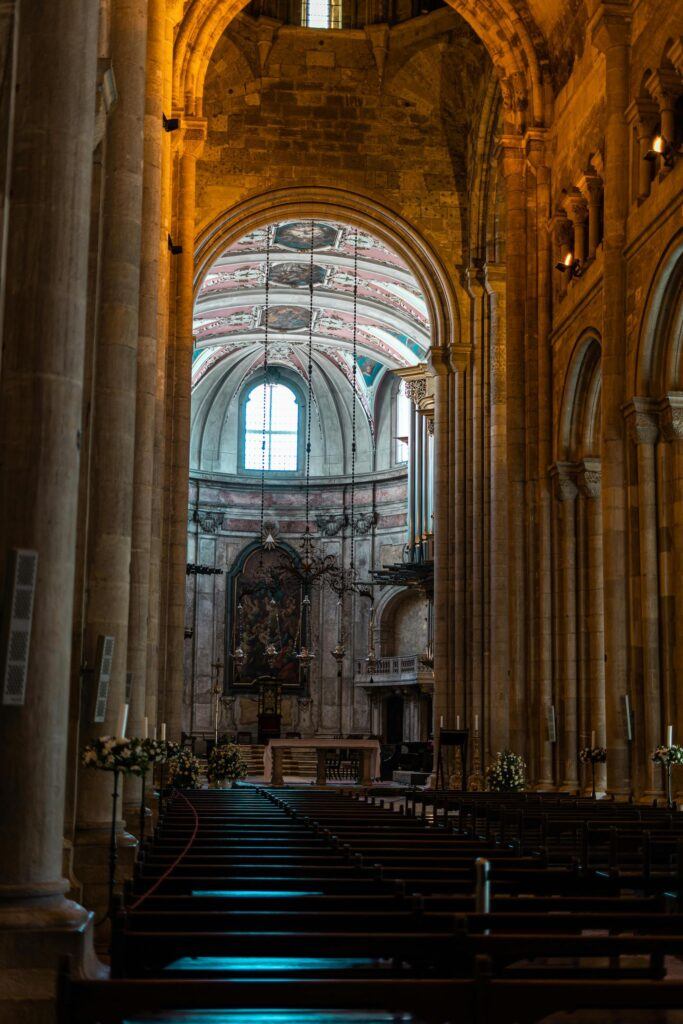
8. Lisbon Cathedral
Lisbon Cathedral, also known as Sé de Lisboa, is the oldest and most important church in the city. Built in the 12th century, it has seen many changes over the years. The cathedral is located in the Castelo district, near the ancient Alfama neighborhood. It has a fortified Romanesque design and has survived several earthquakes, including the big one in 1755.
When you visit, don’t miss the Gothic cloister. It’s not just about the chapels; the on-site excavations have revealed foundations of Roman and Moorish dwellings. This makes the archaeological dig a cool attraction on its own.
Inside, you’ll find a treasury with a collection of priceless sacred art. The cloisters also show off archaeological remains from the past 3000 years. This place is a must-see for history buffs and anyone interested in Lisbon’s rich past.
9. MAAT
The Museum of Art, Architecture, and Technology (MAAT) is a must-see in Lisbon. Its curved lines and white tiles make it look like a spaceship. The building itself is a piece of art. You can walk around and even on top of it. The view of the 25 de Abril Bridge is stunning. Inside, you’ll find exhibitions on modern art, architecture, and technology. Even if you’re not into art, the waterfront landmark is worth a visit.
10. LX Factory
Once an old industrial textile complex, LX Factory is now home to Lisbon’s trendiest restaurants, bars, and shops. Located beneath the Ponte 25 de Abril bridge, this spot is a must-visit. The area is filled with unique stalls, specialty shops, and funky restaurants. If you want to experience modern, forward-thinking Lisbon, this is the place for you.
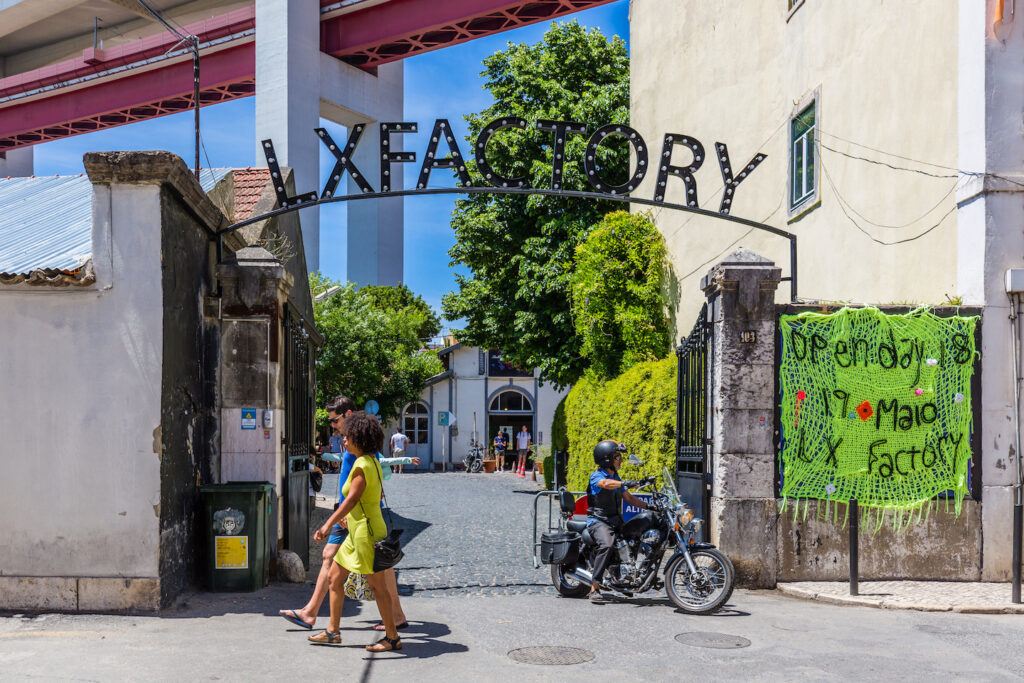
Things to Do at LX Factory
- Explore the vivid street art that enhances the old industrial units.
- Visit the dynamic creative tech hub.
- Enjoy live concerts, film screenings, fashion shows, and art exhibitions.
Getting There
Take the E15 tram and get off at the Santo Amaro stop. It’s a short walk from there.
Frequently Asked Questions
What is the best time to visit Lisbon?
The best time to visit Lisbon is during the spring (March to May) or fall (September to October) when the weather is mild and there are fewer tourists.
How many days should I spend in Lisbon?
Spending at least three days in Lisbon is recommended to explore the main attractions, enjoy the local cuisine, and experience the city’s vibrant culture.
Is Lisbon a family-friendly destination?
Yes, Lisbon is a great destination for families. There are plenty of activities and attractions suitable for children, including parks, museums, and the Lisbon Oceanarium.
What is the best way to get around Lisbon?
Lisbon has an excellent public transportation system, including buses, trams, and the metro. Walking is also a great way to explore the city’s neighborhoods.
Are there any day trips from Lisbon worth taking?
Yes, there are several great day trips from Lisbon, including visits to Sintra, Cascais, and the beaches of Costa da Caparica.
What are the must-try foods in Lisbon?
Be sure to try pastéis de nata (custard tarts), bacalhau (salted cod), and sardinhas assadas (grilled sardines) when visiting Lisbon.
Is English widely spoken in Lisbon?
Yes, English is widely spoken in Lisbon, especially in tourist areas, hotels, and restaurants. Most locals working in the tourism industry speak English.
What should I pack for a trip to Lisbon?
Pack comfortable walking shoes, lightweight clothing for the summer, and a light jacket for cooler evenings. Don’t forget sunscreen and a hat for sun protection.

